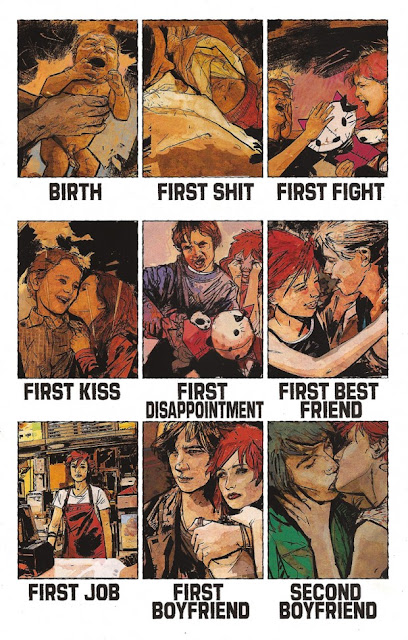It’s 1969. Right in the height of that era that everyone knows by three things, and three things only: sex, drugs, and rock and roll. Well, this latest edition of the League of Extraordinary Gentlemen certainly has all of those things in spades.
First of all, there are some major reasons for a little bit of beginning grumblings. This is the second part in a trilogy entitled The League of Extraordinary Gentlemen: Century. It’s a prestige format book. I haven’t checked but it must be about 80 or so pages. Well, this just came out in July 2011, and can anyone remember when part one was published? I had to check the indicia on the previous volume...1910 came out in April 2009. Whaaaaaat was the holdup, guys. I can’t remember what kind of a release schedule was promised for this series two years ago, but I want to take a guess that they said six months between installments. ****I just had to look this up...the original schedule was for one book a year. They’re only one year behind schedule at this point.**** So this is just craziness. It’s been so long between the two books that the price went up from $7.95 for 1910 to $9.95 for 1969.
So anyway, maybe it would be good to move on to the actual comic. Mina Harker, Allan Quartermain, and Orlando make up the League in this story. As usual, the book is full of characters who will be significant to you if you can remember another story in which you might have already encountered them. In this edition of LXG, we have an analogue for the Rolling Stones in the Purple Orchestra. There is a free concert in Hyde Park for their dead bandmate. He was killed in a pool by some hooded occultists, but the general populace doesn't hear about things like that.
The League is trying to stop Oliver Haddo (a stand-in for Aleister Crowley) from taking over the body of a rock star. This will apparently be a good next step for the man who wants to bring about the Antichrist. I guess it makes sense. The stuff is sometimes referred to as devil music, I suppose.
There is no shortage of reasons to keep this book far, far out of the reach of children. Maybe one of them involves the fact that the story's climactic battle between Mina and Haddo on the astral plane really makes it seem like drugs might just be the answer after all.
I feel like I enjoyed this volume a lot more than I liked 1910. I say this while being pretty fuzzy on just what happened when I read that comic two years ago, so maybe my opinion should be taken with a grain of salt. I feel like part of the reason is that I was able to catch some references.
Things like "oh, this is like when Brian Jones died and the Stones had to carry on without him."
"That guy is just like Mick Jagger, and the song he's singing is just a slightly more nefarious version of Sympathy For The Devil."
This makes me wonder about the exact merit of Alan Moore's work here. Does someone with a familiarity with Michael Moorcock's novels have a better time reading this stuff? If I had no idea about the Rolling Stones would I be able to get into 1969? I know that the idea is to create a story that is totally enjoyable on its own, but does this really work? Let's get somebody who doesn't know a lot about anything and plop this book in his or her lap. Or wait, let's not...there's a lot of "details" in this book that would probably scare away somebody who hasn't had ample preparation.
Favorite character whom I recognized from another work of fiction? Well, I was quite surprised to see that Lord Voldemort himself had a significant role, albeit in his early days as Tom Marvolo Riddle.
Kevin O'Neill's artwork is at all times a joy. He has that admirable combination of cartoonishness and complexity to his pages that just makes the whole book worthwhile. It's almost too bad that this page featuring the Nautilus winds up being just a tease since it isn't seen anywhere else in 1969.
Well, at this point all that can be said is that the LXG saga is finally progressing, and it would be really nice if we didn't have to wait another two years to see how the Century trilogy concludes.




























